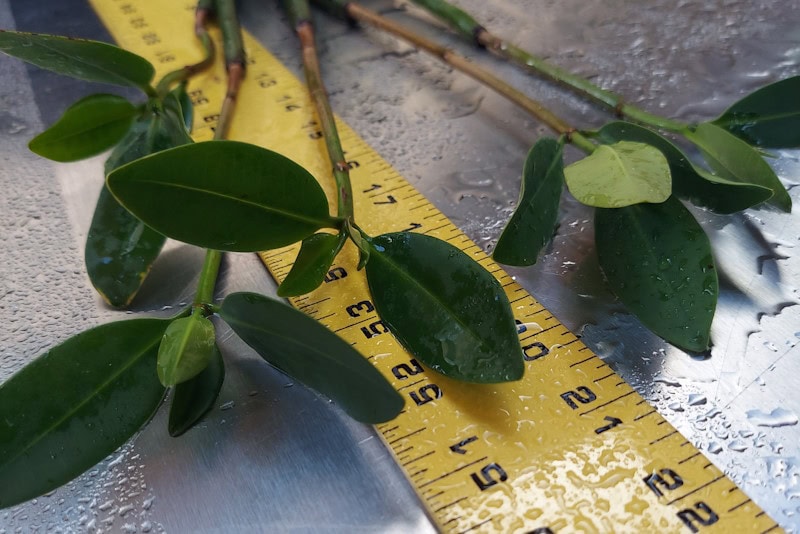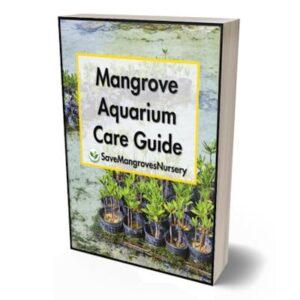
Mangrove trees are unique and fascinating additions to any aquarium. Not only do they enhance the visual appeal of your setup, but they also contribute significantly to water quality by acting as natural filters. However, if you’re considering adding mangroves to your aquarium, you might be wondering: how fast do mangrove trees grow in an aquarium?
This article will explore the factors influencing mangrove growth, share insights from personal experience, and offer tips to help your mangroves thrive in an aquarium environment.
Understanding Mangrove Growth Rates
Mangroves are slow-growing plants by nature. In their natural habitats, such as coastal regions and tidal zones, they can take several years to reach significant heights. When grown in an aquarium, their growth rate can vary based on several factors, including light, water quality, and nutrients.
The Nature of Mangrove Growth
Mangroves typically grow at a rate of 1 to 2 feet per year in their natural environment. However, when grown in an aquarium, their growth is usually slower. This is due to the controlled environment of an aquarium, which may not provide all the conditions that mangroves experience in the wild, such as tidal fluctuations and natural sedimentation.
Good: ✅
- Mangroves add a unique aesthetic to your aquarium and contribute to water filtration.
- They are hardy plants that can adapt to various water conditions, including freshwater, brackish, and saltwater.
Bad: ❌
- Mangroves are slow-growing, which might require patience from the aquarium owner.
- They need specific care, including adequate light and nutrients, to thrive in an aquarium setting.
Factors Influencing Mangrove Growth
Several factors can influence how fast mangroves grow in an aquarium. Understanding these factors will help you create the ideal environment for your mangroves to thrive.
Light Requirements
Light is one of the most critical factors in mangrove growth. Mangroves require bright, indirect light to perform photosynthesis effectively. In their natural habitat, they are exposed to plenty of sunlight, which drives their growth. In an aquarium, providing adequate lighting is crucial.
Good: ✅
- Full-spectrum LED lights that mimic natural sunlight can promote healthy growth.
- Mangroves can grow well under consistent lighting schedules, typically 10-12 hours of light per day.
Bad: ❌
- Insufficient lighting can slow down growth and cause yellowing leaves.
- Direct, harsh light can cause stress and lead to poor growth.
Water Quality
Water quality is another essential factor for mangrove growth. Mangroves are excellent at filtering water and absorbing nutrients, but they still require a balanced environment to thrive.
Good: ✅
- Regular water changes help maintain optimal water quality, which supports healthy growth.
- Mangroves can thrive in various water types, but they do best in brackish conditions with stable salinity levels.
Bad: ❌
- Poor water quality, including high levels of pollutants, can stunt growth and damage the mangroves.
- Fluctuating water parameters, such as pH and salinity, can stress the mangroves and slow down their growth.
Nutrient Availability
Mangroves rely on nutrients available in the water to grow. In the wild, they absorb nutrients from both the water and the soil. In an aquarium, where the substrate may not provide as many nutrients, additional supplementation might be necessary.
Good: ✅
- Supplementing with liquid fertilizers can provide essential nutrients like magnesium, calcium, and potassium.
- Mangroves can benefit from organic substrates that release nutrients slowly over time.
Bad: ❌
- Over-fertilizing can lead to nutrient imbalances and algae growth, which may harm your mangroves.
- Lack of essential nutrients can cause stunted growth and yellowing leaves.
🛑 Fun Fact: Mangroves have a unique ability to filter out salt from seawater through their roots, allowing them to survive in saline environments. Find out why you need mangrove plants in your aquarium.
Root Space and Support
Mangroves develop extensive root systems that help anchor them in their environment. In an aquarium, providing adequate space and support for the roots is crucial for healthy growth.
Good: ✅
- Providing a deep substrate or a dedicated area for the roots to spread can support healthy root development.
- Mangroves can be anchored in pots with a nutrient-rich substrate to encourage strong root growth.
Bad: ❌
- Limited root space can restrict growth and lead to poor health.
- Roots that are not adequately supported may cause the mangrove to become unstable in the aquarium.
🛑 Mangrove Fact: Mangroves use their roots not only to anchor themselves but also to breathe. The roots have specialized pores called lenticels that allow oxygen to reach the submerged parts of the plant. Discover the Top 5 Mistakes To Avoid When Growing Mangroves In Your Aquarium.
How to Encourage Faster Growth in Mangroves
While mangroves are naturally slow-growing, there are ways to encourage faster growth in your aquarium. These tips can help you create an environment that supports healthy and consistent growth.
Provide Adequate Lighting
Invest in high-quality, full-spectrum LED lights that mimic natural sunlight. Ensure the mangroves receive 10-12 hours of light daily to support photosynthesis and growth. If your aquarium is near a window, natural light can also benefit the mangroves, but be cautious of direct sunlight, which can cause overheating.
Maintain Optimal Water Conditions
Regular water changes are essential to maintain water quality and remove accumulated waste. Monitor the water parameters closely, including pH, salinity, and nutrient levels, to ensure they remain within the ideal range for mangroves. If you’re growing mangroves in freshwater, consider adding supplements to provide the nutrients they need.
Use Nutrient-Rich Substrates
If possible, use a nutrient-rich substrate in your aquarium that can release essential nutrients slowly over time. This can provide a consistent source of nutrients for the mangroves, supporting healthier growth. You can also use root tabs or liquid fertilizers to supplement nutrient levels in the water.
🛑 Fun Fact: Mangroves play a crucial role in coastal ecosystems by stabilizing shorelines, providing habitat for marine life, and filtering pollutants from the water.
Prune Regularly
Pruning can encourage bushier growth and prevent the mangrove from outgrowing its space in the aquarium. Regularly trim dead or yellowing leaves and any branches that appear to be growing out of control. Pruning also helps the plant focus its energy on healthy growth rather than maintaining older, less productive parts.
Be Patient
Growing mangroves in an aquarium requires patience. They are slow-growing plants by nature, and their growth rate may be even slower in a controlled environment like an aquarium. However, with the right care and attention, your mangroves will eventually flourish, becoming a beautiful and functional part of your aquarium.
🛑 Mangrove Fact: Mangroves have evolved to survive in some of the most challenging environments on Earth, including areas with fluctuating salinity, tides, and oxygen levels. Their resilience is a testament to their adaptability.
In summary, mangroves are slow-growing plants that can take time to establish in an aquarium. However, by providing the right conditions—adequate light, stable water quality, sufficient nutrients, and proper root support—you can encourage healthy growth and enjoy the unique beauty and benefits that mangroves bring to your aquarium.
Whether you’re an experienced aquarium enthusiast or just getting started, mangroves can be a rewarding and beneficial addition to your tank.
How Do I Choose My Very First Plant?
So you have learned about the incredible benefits of adding mangrove plants to your tank, but you still don’t know which exact plant to add to your specific tank size?
Don’t worry, because we’ve created an easy Step-by-Step guide to help you with your selection process.
Click the button below to find out which plant is perfect for your aquarium.

 Cart is empty
Cart is empty 
